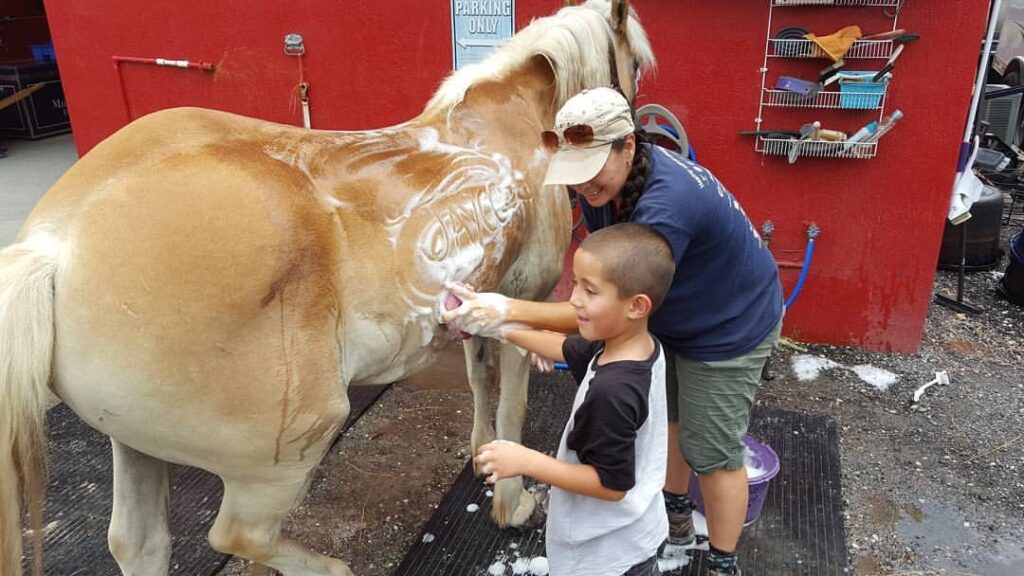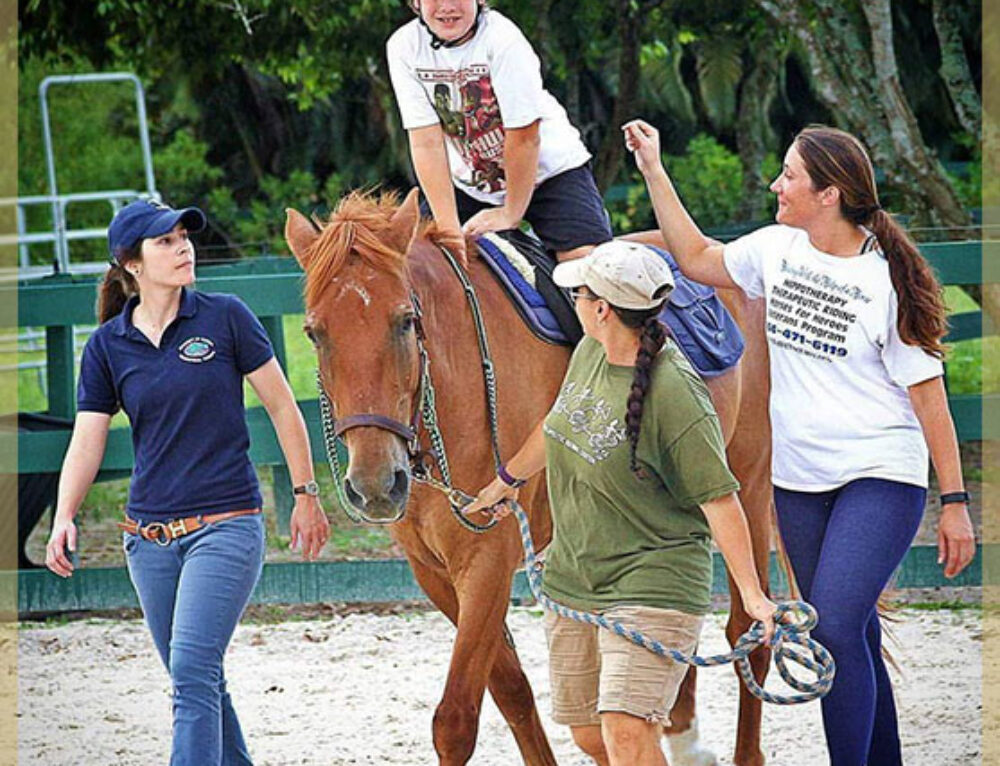May is Better Hearing and Speech Month
How does incorporating Hippotherapy into a patient’s Plan of Care Help with Speech and Communication Disorders?
What Is Hippotherapy?
The term hippotherapy refers to how occupational therapy, physical therapy, and speech-language pathology professionals use evidence-based practice and clinical reasoning in the purposeful manipulation of equine movement as a therapy tool to engage sensory, neuromotor, and cognitive systems to promote functional outcomes. Best practice dictates that occupational therapy, physical therapy, and speech-language pathology professionals integrate hippotherapy into the patient’s plan of care (POC), along with other therapy tools and/or strategies.
Hippotherapy means treatment with the help of a horse and is derived from the Greek word hippos, meaning “horse” (Heine & Benjamin,2000). During hippotherapy, the client sits on the horse’s back and physically accommodates to the three-dimensional movements of the horse’s walk. The client does not influence the horse; rather, the horse’s movement influences the rider. Functional riding skills are not taught, and any improvement in the client’s quality of life is a secondary benefit (Klimas, 2001). Activities are incorporated within the scope of practice of the therapist to complement the horse’s movement and help the client move toward meeting his or her treatment goals. Speech–language pathologists (SLPs) can receive education and training through the American Hippotherapy Association and certification through the American Hippotherapy Certification Board.
Hippotherapy can be appropriate for patients with a variety of diagnoses including but not limited to the following:
Cerebral Palsy
Autism
Muscular Dystrophy
Spina bifida
Traumatic brain injury
Language disorders
Multiple Sclerosis
Strokes
Hippotherapy can incorporate activities that directly impact a patient’s goals. It also can provide motivation and emotional support.
Studies have shown how incorporating Hippotherapy into a patient’s plan of care can help in these areas:
Motivation
Cooperation
Raised self-esteem
Lowered stress and level of effort
Promotes improvement in the client’s physiologic systems, the basic foundation for speech.
To speak, one must physically have the ability to support speech by having sufficient breath support, head, neck, and trunk support, and proper posture. An example would be a child with Cerebral Palsy (CP) who may have poor muscle tone and therefore require adaptive equipment to improve posture and for body support. The limitations of CP may not only result in a lack of verbal output but also a decrease in motor abilities required for the patient to communicate via gestures, signs, and AAC (augmentative and alternative communication) devices.. (Shurtleff, Standeven & Ensberg 2009) Incorporating hippotherapy into this client’s POC will help to improve all these functions.
Other ways that Hippotherapy can help patients are:
Increase exposure to language via exploring the environment, children who have motor limitations are prevented from exploring their environment like typically developing children.
Children with neuromotor deficits may also present with a lack of sensory integration. The horse’s movement and the environment supply a plethora of sensory stimulation. All senses of touch, proprioception, vision, hearing, smell, and the vestibular system are affected. Placing a patient on a horse’s back with just a pad, no saddle or stirrups will allow maximum proprioceptive input, by asking the client to push on the horse’s neck with their hands the child will receive sensory input through the hands, up the arms, and into the shoulders. Turning a child backward on the horse will completely change his/her visual field and vestibular input.
Some activities used during Speech therapy sessions on horseback:
Developmental positioning: Placing a child in kneeling, quadruped even standing while on the dynamic rhythmical movement the horse provides, results in an improvement in balance, coordination, and core strengthening. The upright, or against gravity positioning helps the child with low muscle tone utilize their diaphragm which in turn leads to improved speech.
Using voice commands like yes/no or stop/go to verbalize to the horse in a functional manner can be incorporated in many other conversations during the child’s daily life. Once mastered this can be expanded to many other themes including colors, letters, making choices, puzzle-solving.
Targeting cognitive skills by playing memory games and identification in the arena. For example, the patient would search for and find letters, objects, or toys and then have to try and recall where they were found.
A key component in any successful Therapy treatment is motivation. Therapists need to provide mental and emotional support for the duration of a patient’s treatment. Working with horses helps to maintain patients’ interest in learning and reaching his/her goals. Children especially will get “burned” out after months in a traditional setting. Incorporating hippotherapy into a patient’s POC can improve attention to tasks and motivation to complete tasks.

Jayce’s Story as told by his mom:
My son has been going to Bit by Bit for hippotherapy since the age of 4 he is now 10. When he first started with them he would communicate with a lot of pulling and pointing. Slight sign language and some pecs. Unable to express his wants and needs would lead to frustration and meltdowns. Being extremely high sensory seeking would also interfere with focus. This is where hippotherapy helped him immensely. With the input he’d receive from riding the horse and grooming the horse allowed him to listen, repeat and follow directions. By having the horse in his speech sessions he began spontaneously requesting to ride the horses by name. What started with two words led to ” I want Chubby please.” He has come a long way with speech and I know hippo has played a big role in it. Now he tells me “mommy at 3:00 it’s time for the red barn.” It is his favorite place to go and We are very happy and thankful to have found Bit By Bit.


